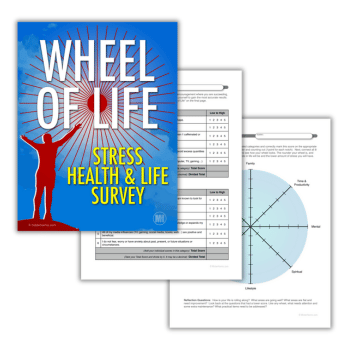Holistic approach to education – Practical suggestions to try

Genuine school improvement becomes much more likely when you adopt a holistic approach to education…

- by Teachwire
- Classroom expertise and free resources for teachers

What is an holistic approach to education and what practical steps can you take to create an holistic learning environment in your classroom? Join us as we find out…
How to create an holistic learning environment
Nikki Cunningham-Smith sets out the tangible improvements to behaviour, workload and mental health you can secure – for teachers and pupils – via an holistic approach to education…
What is holistic teaching?
Holistic teaching adopts the philosophy of educating the whole person, beyond the academics. Emphasis is placed on creating positive learning environments. This is in order to remove external factors that may be presenting barriers to learning.
It’s far from a new concept. It’s been developed and refined over the years to varying degrees, in practices made famous by the likes of Maria Montessori and Rudolf Steiner.
By utilising an holistic approach to education, you’ll be able to build an environment that’s more impactful for the learning experience.
If educators are willing and able to look beyond their immediate curriculum demands and engage with such practices, then there’s a high likelihood that pupils’ motivation levels will increase.
This will be accompanied by boosts in their persistence, resilience and eventually, overall performance.
Your classroom environment will have become a more engaging and positive space in which to spend time. This makes pupils more inclined to return to that place lesson after lesson.
How to create an holistic learning environment
You might be surprised by the extent to which you’re already promoting an holistic approach to education through your practice as a matter of habit, without even realising it.
Let me outline here some key elements of holistic teaching to help you identify those strategies you might wish to develop further.
Integrate social emotional learning
By explicitly teaching skills such as empathy, self-regulation and conflict resolution, and incorporating these into your lessons, you can start to build a safe learning environment that promotes a freedom to learn, free of distractions.
Utilising key skills such as active listening and regular check-ins throughout the lesson will, over time, help you more accurately gauge pupils’ readiness for learning, and their level of understanding and engagement with the topic.
Personalise learning
Providing multiple pathways for students to access content – through different levels of difficulty, varied materials or flexible grouping – will empower learners to work at their own pace.
This can be further supported by providing pupils with personalised goals and targets that they can achieve and manage individually throughout the lesson.
Promote collaborative learning
Group work and peer learning lets pupils put into practice any skills they’ve been taught around strengthening their emotional intelligence.
Encouraging pupils to work in diverse groups on solving problems, learn from each other and share ideas will improve their understanding of the topic at hand.
It will also build on their ‘hard’ collaborative skills (communication and teamwork) and ‘soft’ skills (social awareness).
This will present opportunities for you to develop your classroom space as a community.
Bestow upon your pupils responsibility for ensuring that everyone in class can exercise their right to learn. All being well, this should result in a better sense of shared responsibility and mutual support.
Use real-world examples
Incorporate real-world examples and actual events into your planning where you can. This can make your pupils’ learning more meaningful to them.
It can also help them apply the academic context of what they’re learning about to their everyday lives, personal interests and local communities.
It may also present students with deeper learning opportunities at home. This may bring about a further cementing and embedding of knowledge outside the classroom.
Provide regular feedback and positive reinforcement
Giving pupils timely and specific feedback will help you look beyond just their academic outcomes and stay focused on their efforts and growth.
By doing so, you can help pupils better understand their own learning processes and how they might be improved. Think ‘show your working’ in a maths equation, but applied to a pupil’s learning journey.
Accompanying this should be celebrations of pupils’ achievements, big and small. Marking those small wins will foster a positive, growth-orientated classroom atmosphere.
It will also bring about a form of intrinsic motivation that’s hard to achieve, but plays a big role in educating the whole self.
Build strong teacher-pupil relationships
Taking the time to learn about your pupils’ individual needs, interests and strengths can produce strong and trusting relationships that will thrive within a supportive learning environment.
A willingness and ability to model positive behaviour in your interactions with pupils will demonstrate to them your genuine care for their wellbeing.
It will also further contribute to the creation of an environment where learners feel safe in expressing themselves.
This can also help you navigate and manage the fear some pupils can have of appearing wrong in front of their classmates, and prevent them from opting to disengage so as to avoid humiliation.
If they can feel safe in their incorrectness, yet supported in their willingness to try regardless, then a willingness to learn through uncertainty will surely follow.
Incorporate mindfulness practices
Engaging with widely used mindfulness techniques, such as deep breathing or guided imagery, could provide pupils with a valuable form of support. It could also help them manage their stress levels.
Mindfulness activities can potentially take place during natural transition periods within lessons, thus avoiding any impacts on learning time.
For example, when a resource is being handed out to the class (think books or worksheets), use that that time to practise box breathing to help get the class more focused.
When transitioning from group to individual work, you could deploy a music cue to trigger a change of work tone. Or try a movement break to help pupils re-energise and refocus.
Trending
Get creative
Interdisciplinary approaches to learning present opportunities for connecting across subjects. This can in turn create space for self-expression and critical thinking beyond the curriculum – fusing, say, elements of history and art together, or combining science and drama.
Nikki Cunningham-Smith is an assistant headteacher based in Gloucestershire.
More holistic approach ideas to try
Taking a holistic approach to education can mean simply stepping back and looking at those things we perhaps don’t pay enough attention to, explains Rebecca Leek…
Midway through yet another frantic week, we’ll be largely focused on delivering lessons and getting through the hour ahead of us.
Taking the time to notice and reflect on the patterns around us is usually something we have to force ourselves to do.
One of my favourite system thinkers, Frijtof Capra, once observed that “The understanding of life begins with the understanding of patterns.”
Scanning some of the wider forces at play in our professional lives, noting the areas where different groups intersect and considering the differences between those groups can prompt some important insights. It can trigger small changes that ultimately deliver valuable rewards.
But what does this look like in practice? Here are five ways in which you can start practising a holistic approach to education…
1. Classroom layout
The layout of the classroom itself is a pattern that has a tangible impact on learning. We can start with a seating plan that we go on to tweak over time.
But what would happen if you were to completely rearrange the seating to create more space? Or provide opportunities for different student groupings?
Sometimes, even just changing the distance between rows, or adjusting how far desks are from windows can have a measurable impact.
Where is the teacher’s desk positioned in relation to the class, and what’s on it? Assorted clutter, books, neat piles, healthy food? These are all environmental details that your students will see and react to.
2. Interior infrastructure
There may seem little point in thinking about more significant classroom alterations, but it’s always worth raising any concerns or queries.
It might take a year or two – perhaps once your school’s next desk order or technology review is due. However, there won’t be any change at all unless you prompt it.
Does the placing of certain cupboards facilitate learning or disrupt it? Are the blinds adequate, and what happens to them when the windows are open? Be mindful of problems and potential solutions that no one else has previously identified.
3. Teaching assistants
As a former SENCo, I remember how much I valued the TAs that provided care and support for our students, but also how they could be sadly somewhat neglected by teaching colleagues.
Consider what you can do to help your TAs beyond the standard routines that should be in place already, such as sharing advance information about upcoming lessons and key students.
If they’re often carrying equipment between rooms, could you set aside some dedicated storage space? If they roam during lessons, check that there’s enough space between desks for them to do so.
Train yourself to notice such details and make changes if needed.
4. You
When we say ‘everyone matters’, that includes yourself. I began the year by talking to staff in our trust about the importance of wellbeing and was very straight with them.
I explained that fostering wellbeing isn’t dependent on employers providing comprehensive ‘life support’, but is actually a two-way process which starts with a commitment that has to come from each individual.
In my case, I’m highly sensitive to the space around me, but it took me a while to realise this when I first started teaching.
A messy desk with piles of clutter would cause me stress, which in turn meant I missed opportunities to use classroom space effectively.
After taking the decision to change my habits, the impact was significant. I resolved that the last five minutes of each day would now be spent clearing and resetting my desk.
Subsequently, I worked faster during PPA time, could provide students with what they needed more quickly.
I was soon putting objects and books on display that made for positive additions to the learning environment. Overall, I just felt calmer.
5. Valuing diversity
‘Valuing diversity’ is a key permaculture principle, stemming from an awareness that ecosystems are always stronger when they contain variety.
When did you last visit the classrooms of a different department? A maths teacher will probably find that their school’s art studio functions very differently from what they’re used to, but it’s still worth taking a look, if only to see what works for them.
Every teacher has their own way of working, which is why I’ve yet to visit a new classroom without gleaning something useful from it.
There’s also the possibility that you notice something your colleagues haven’t seen themselves. Maybe a board partially covering a window that’s only there because someone absent-mindedly left it there a decade ago.
If the eyes and brains of staff at your school are all busy observing, reflecting, seeking out what works and what might work better, then a school can only improve over time, holistically.
Rebecca Leek has been a secondary and primary classroom teacher, head of department, SENCo and headteacher; she is currently the CEO of SEAMAT – a trust of three schools in South Essex.










